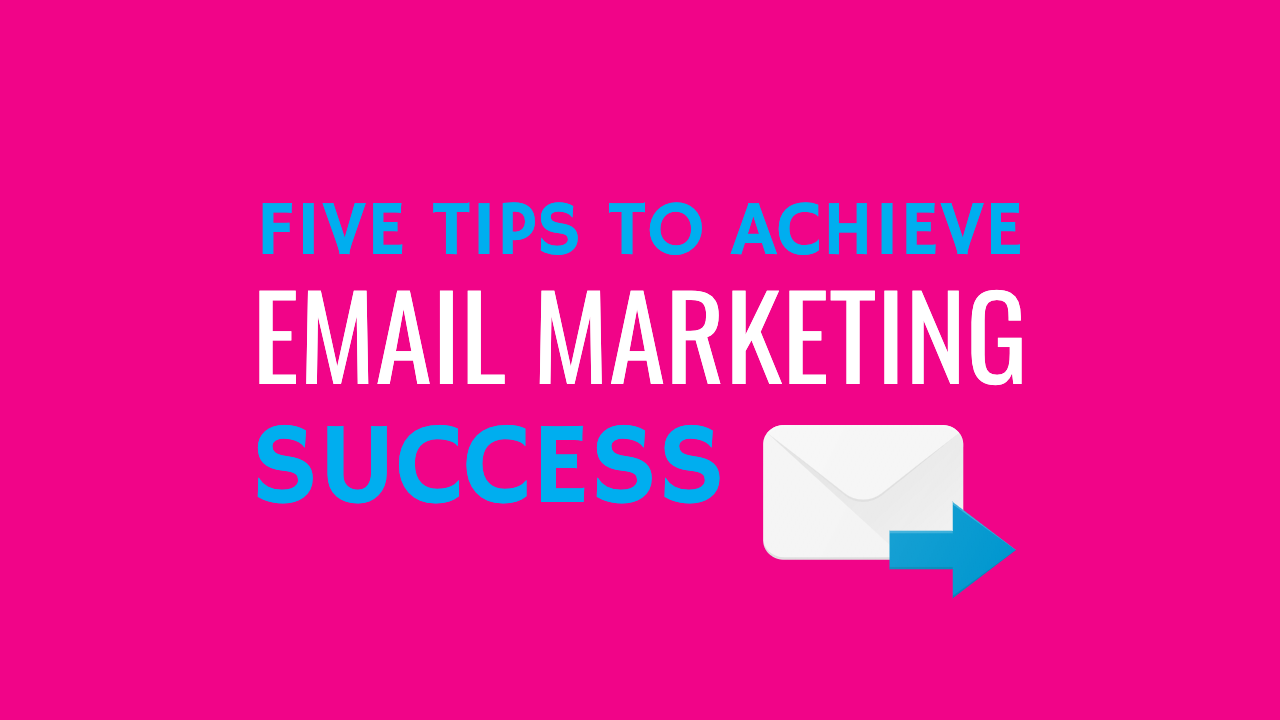5 Tips to achieve email marketing success

Email marketing can be a potent tool for marketing your products or services to people and can help to generate new interest in your campaign.
The right tools and a strategic approach often lead to increased engagement and a higher conversion rate.
Here's my 5 tips for developing your email marketing campaigns:
1. Build your list
Email marketing has the ability to generate high quality leads, but only if the right people sign up to your list. List building is one of the most important stages in the process.
You need to obtain quality prospects, otherwise the information that you send out is not going to have the desired effect.
Building a high quality list though takes time, patience and determination.
Ideas to build your list:
- Email subscribe pop-up on your website – free tools such as Hellobar.com (below) are really effective for capturing visitors email addresses.
- Similarly, create a dedicated landing (or squeeze) page to capture email addresses in return for a free download such as an eBook.
- Add a subscribe button to your blog updates as and when they appear.
- Include an invite on your email signature and on your invoices.
These are just some of the possible ideas to increase sign-ups. However, it is important to remember that you can only add someone to your list who has consented to do so.
HOWEVER - PLEASE BE MINDFUL OF GDPR:
General Data Protection Regulation (GDPR)
A law which attempts to standardise data privacy laws across the EU. It became fully legal 1st April 2018 and to comply with the legislation, companies will need permission to contact a person that is “freely given, specific, informed and unambiguous”
2. Segment your list - based on your customer personas
Email can be a very personal form of marketing communication. Once you have implemented ethical list building strategies and your list is growing, you need to consider segmenting it into more niche categories.
For example:
- Demographics (age, sex, status, etc.)
- Interests
- Purchase history (existing customers)
- Geographical preferences
- Promotions or special offers that the individual has participated in previously
3. Plan your campaigns
Email marketing is all about being strategic. Subscribers will quickly look for the unsubscribe button if they are constantly being bombarded with sales messages.
The information that you send to your subscribers should be valuable to them – not constant selling!
Content should be varied including blog posts, articles exclusive to subscribers and video content as well as news stories and occasional marketing offers which aim to generate a direct response.
Different types of email campaigns you can send to your subscribers:
- Newsletter – a combination of news, blog posts, special offers, third party articles.
- Marketing offer – aimed at driving a direct response such as a discount offer or special promotion on a specific product / service.
- Announcement – launch of a new product / service / change of business such as opening times.
- Event invitation – launch events, conferences, seminars, open days.
4. Campaign Development
Creating emails for your campaigns should be approached with care.
You only have a matter of seconds to capture the interest of the reader.
- Personalisation: Growing a personal relationship with your subscriber is the main aim of email marketing. Refer to the person regularly – even include their name if available.
- Subject line: Create a benefits focused, engaging title for your email.
- Content: The main content should be valuable to the reader, engaging and precise, followed by a few select links to related stories on your website to encourage and increase click through rates.
- Call-to-action (CTA): Complete the email with a call-to-action outlining what further action is required – visit our website, read or download more.
- Social sharing: Include social media links at the end of your email to encourage social shares and further interaction with your brand.
5. Measure
Email marketing is only effective if your strategies prove successful. The only way that you can assess whether your campaigns are performing is to collect and evaluate key metrics.
If you use a dedicated email marketing tool (such as MailChimp) you can generate detailed reports within these applications.
Typical data that you can collect and monitor include:
- Number of emails opened and read
- Number of emails not opened
- Number of emails bounced back
- Click through rates – based on specific links
- Number of people who unsubscribed
- Number of social shares
Regularly review this data to fine tune your email marketing campaigns, focusing on strong areas and eliminating strategies, which have proved less successful.
